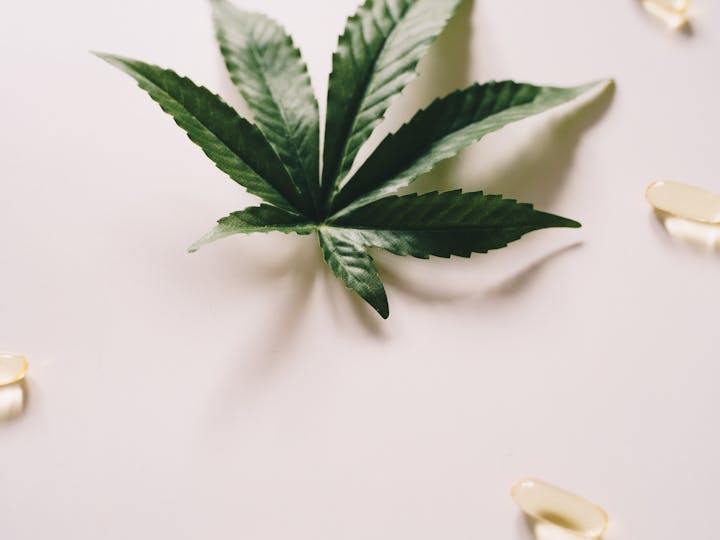If you’ve ever stood in front of a shelf full of kratom options—powders, tablets, extracts—you’ve probably wondered: What’s the real difference? It’s all from the same plant, right?
But once you dig in, the gap between extract-based kratom and whole-leaf versions is bigger than it seems.
More people are starting to compare the two as kratom becomes part of their everyday routine—not just something they take on rough days. And knowing how they actually stack up makes it easier to pick what fits you best.
What Is Extract-Based Kratom and What Formats Does It Come In?
Extract-based kratom is a concentrated form made by isolating specific alkaloids—primarily mitragynine and 7-hydroxymitragynine—from the kratom leaf. Instead of grinding the whole leaf into powder, manufacturers steep, boil, and reduce the material down into a more potent version.
This process results in smaller doses with more noticeable effects, which is why many users turn to extracts when they’re looking for faster relief, a cleaner feel, or more control.
Some of the most common extract formats you’ll see include:
- Tablets or Capsules: Pre-measured for convenience and discretion. Popular with users who want consistency in every dose. A good example is 7Tabz, a concentrated tablet made from 7-hydroxymitragynine extract, designed for those who prefer a potent format without the mess of powders or liquids.
- Liquid Extracts: Fast-acting but harder to dose accurately. Often used sublingually or added to drinks.
- Powdered Extracts: Similar in texture to whole-leaf powder but significantly more concentrated—great for mixing or custom routines.
What Is Whole-Leaf Kratom—and What Are the Usual Ways to Take It?
Whole-leaf kratom is the original, unrefined form of the plant—made by drying and grinding the entire leaves of Mitragyna speciosa into a fine green powder. It contains the plant’s natural blend of alkaloids, primarily mitragynine, along with dozens of minor compounds that work together to produce its signature effects.
Common ways people take whole-leaf kratom:
- Toss-and-wash: The traditional method—scooping the powder into your mouth and washing it down with water or juice. Fast but not for everyone due to its strong, bitter taste.
- Kratom tea: Simmered into a tea for a gentler onset. Some users say the ritual itself feels grounding.
- Capsules: Great for avoiding the taste. Slower to absorb but more convenient for dosing on the go.
- Mixing into food or smoothies: Helps mask the bitterness, though it may reduce potency slightly.
How Extracts and Whole-Leaf Differ in Effects, Duration, and Feel
The difference between extract-based and whole-leaf kratom isn’t just about strength—it’s about how the experience unfolds, how your body responds, and how you plan to use it.
Effects:
- Extracts deliver a more concentrated hit. Because they isolate or amplify certain alkaloids (often 7-OH or mitragynine), they can feel more focused, more immediate, and in some cases, more intense.
- Whole-leaf tends to feel more balanced and gradual. Since it contains the full spectrum of natural compounds, the effects are often described as “rounded” rather than sharp.
Onset and Duration:
- Extracts usually kick in quicker—especially formats like tablets, tinctures, or gummies. But the effects may taper off faster or feel front-loaded.
- Whole-leaf often has a slower onset, especially if it’s in tea form or taken in capsule form, but it can linger longer and maintain steadier energy or relaxation levels.
Feel and Tolerance:
- Extracts can build tolerance faster. Because of their potency, frequent use may lead to needing higher doses sooner.
- Whole-leaf allows more flexibility for consistent, lower-impact routines. It’s often favored by people who use kratom daily or for general well-being.
Both options have their place—but understanding how they differ can help you pick what fits your body, your schedule, and your personal goals better.
Which Format Fits Different Routines and Needs
Your choice depends on how you want to feel and how often you use kratom.
Extract-Based Kratom Might Work Better If You:
- Want faster, more concentrated effects
- Prefer pre-measured formats like tablets or gummies
- Use kratom occasionally and want something potent
- Need something compact and easy for travel
Whole-Leaf Kratom Might Be Better If You:
- Prefer a slower, more natural experience
- Use kratom regularly and want to manage tolerance
- Enjoy brewing teas or customizing your dose
Some users switch between both—using extracts when time matters, and whole-leaf when they want a more drawn-out effect.
Conclusion
No two kratom experiences are exactly alike—and the form you choose plays a big role in that. Extracts offer speed and strength, while whole-leaf keeps things slow and steady. The right pick isn’t about which one is “better,” but which one fits your day, your needs, and your pace. Start simple, stay informed, and you’ll figure out what works best for you.


